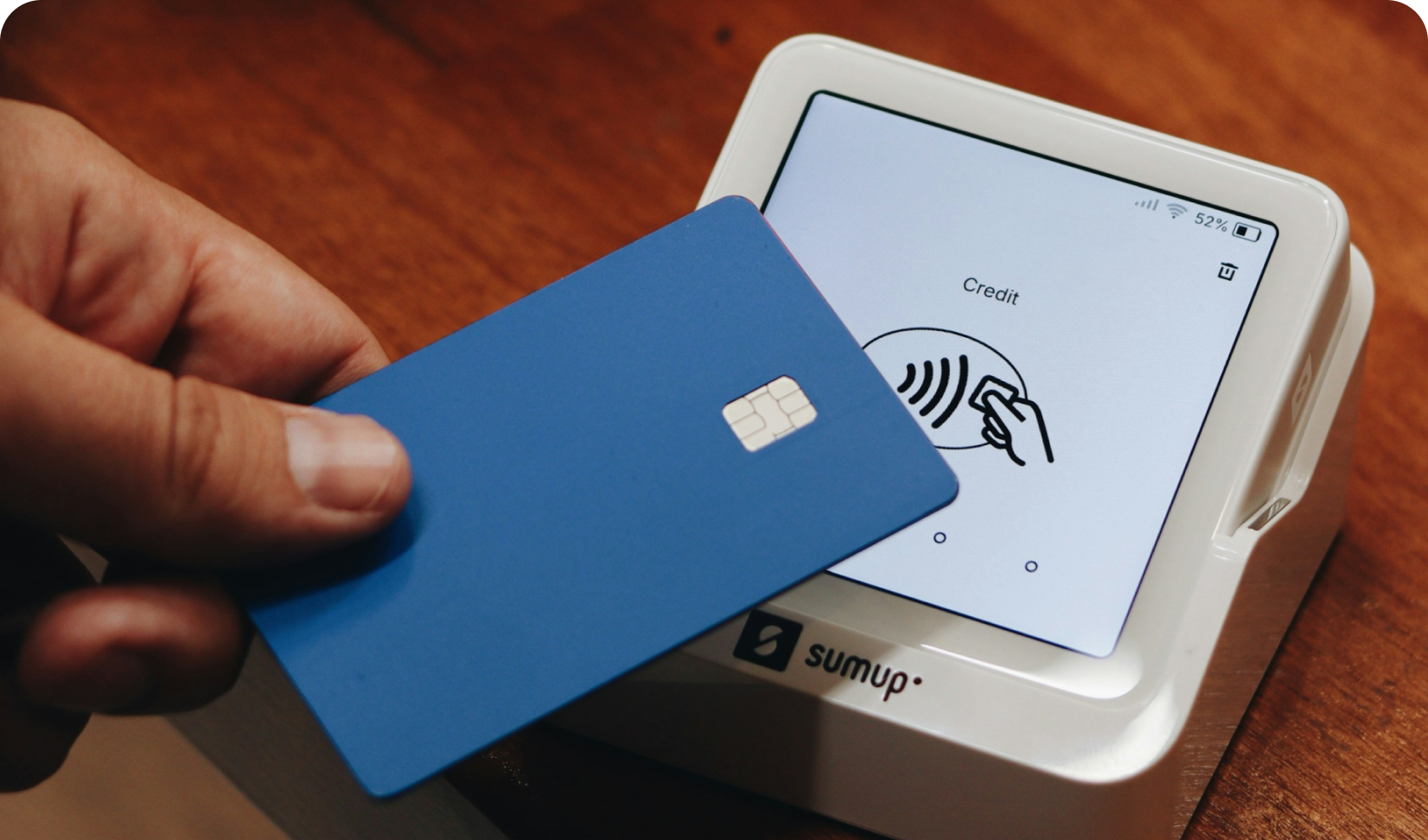Revolutionizing Brand Health with Mental Availability: Key Takeaways
Appinio Research · 19.08.2024 · 15min read

Content
Are you navigating the competitive landscape using a traditional AIDA framework but your brand insights feel superficial and disconnected from actionable results? Or maybe you’re looking to understand how your brand is performing in a rapidly evolving market, and fast-changing consumer behaviors?
What if we told you that there’s a new approach at brand tracking that can do all of that, it’s been theorized by some of the most influential figures in marketing research, it’s backed by years and years of extensive research and it’s an all-rounder when it comes to brand health? Keep on reading to find out how Mental Availability will revolutionize how you grow your brand.
![]()
💡Want to hear more about it? Check out our webinar with our Director of Research, Louise Leitsch!
What is Mental Availability?
Mental Availability refers to the likelihood of a brand coming to mind in buying situations. It encompasses the brand's presence in the minds of potential buyers across a variety of contexts and needs, ensuring that the brand is easily recalled when consumers are making purchase decisions.
Jenni Romaniuk, a Research Professor of Marketing and Associate Director (International) at the Ehrenberg-Bass Institute for Marketing Science, has described and articulated this concept in her recent book, "Better Brand Health" written together with Byron Sharp, author of one of the most influential marketing books: “How Brands Grow”.
The authors present an innovative and more effective approach to brand research, an approach rooted in the psychological theory of Mental Availability and Category Entry Points ( CEPs).
The approach is supported by years and years of academic research, and it brings to light the limitations of the current metrics used to track Brand Health.
Why is Mental Availability better to gauge brand health?
Mental Availability emerges as a better approach to gauge brand health as it manages to assess more accurately and dynamically how brands secure a spot in consumers’ minds and ultimately, provides actionable insights on how to achieve better results.
Brand health is traditionally assessed through classic brand tracking funnels leveraging the AIDA approach, namely Attention, Interest, Desire, Action.
They usually include a variety of metrics aiming to paint a comprehensive picture of a brand's market standing and consumer perception: Aided Brand Awareness, Unaided Brand Awareness, Usage, Brand Statements, NPS, Customer Satisfaction, and more.
These metrics have served as the backbone of brand evaluation, providing marketers with data to strategize and optimize.
But these KPIS fail in achieving the most important task: being translated into sales market share.
This means that, even if you are tracking your brand regularly and investing in extensive market research studies, you’ll still be grasping at straws to understand how to actually grow your brand and whether your efforts are actually paying off.
A Mental Availability approach is:
- Predictive
The Mental Availability approach surpasses classic models by offering a direct link to purchase decisions through its emphasis on being mentally available at critical buying moments, mirroring the spontaneous and non-linear nature of real consumer behavior, and incorporating competitive dynamics to deliver more accurate predictions of market shifts and consumer preferences. - Actionable
The Mental Availability approach provides more and richer data compared to the classic brand funnels. Focusing on brand salience and recall across different situations, the Mental Availability Approach offers a better understanding of your brand’s strengths and your opportunities for growth, i.e. Mental Advantage. - Reliable
Classic Brand Trackers overstate the reach of big brands, while downplaying small brands, Coca-Cola's brand awareness is high and anyone can recall the brand when prompted to think about sodas or soft drinks, but what about actual usage? Private label brands may not be recalled as easily, but their usage could be higher.
Classic methods are not able to grasp this complexity. Mental Availability acknowledges the importance of considering market dynamics and how different brands share consumers’ minds.
How is Mental Availability measured?
Mental Availability is measured with the help of numerous innovative metrics but let’s start from the very beginning.
Let's say we have a brand and we want to grow it. In order to do this, we need two things:
- Physical Availability
First, we’ll need physical availability, namely, people need to be able to buy our products somewhere because if they cannot buy it anywhere, they won't buy it. Any prominent in store positioning, any stand, or a very accessible website, if we are talking about e-commerce. This falls under the logistics and distribution of our product(s), but it is a must. - Mental Availability
The second and incredibly relevant thing that we need is mental availability. Our brand needs to come to mind easily and in a multitude of different buying or consumption situations. Our brand needs to be the first mentally available option for consumers.
Consumers don't want to be spending a long time thinking about which brand is better than what other, they just want to make a decision quickly and efficiently, go to the tills, complete the purchase and tick one more errand from their to-do list.
For example, we can think of McDonald's when we want to fix a quick dinner, when we want to celebrate a promotion, when we want to meet friends before the movies, etc.
When a brand has mental availability, it means that the brand comes easily to consumers' minds in a multitude of buying situations. And these buying situations are called Category Entry Points.
Category Entry Points
Category Entry Points (CEPs) are very specific to this methodology.
They are situations that are entry points into the category.
They are the building blocks of Mental Availability, capturing the thoughts that category buyers have as they transition into making a purchase.
They are the moments, occasions, locations, motivations, needs where a brand might come to mind.
When a brand is associated with a wide range of CEPs, it has a higher chance of coming to mind across different buying situations and therefore drive purchase.
Understanding and identifying these CEPs helps you understand the key moments that matter for your brand and drive its relevance in those moments.
How to identify Category Entry Points
As CEPs are the heart of this method, they need to be crafted with the utmost care and attention.
So how do we create Category Entry Points?
- CEPs should be created with the W- questions in mind: “Who is with me? When am I consuming? Where am I consuming? What am I doing? How am I feeling?”.
- CEPs are always formulated for the entire category, not for a specific brand. As a rule of thumb, all brands in a specific category should be able to use the same CEPs, for this reason brand specific situations as CEPs should be avoided.
- Based on recommendations from the authors, CEPs should be generated from qualitative interviews or expert interviews. If you're looking for a jumpstart, Chat GPT can be a valuable resource for generating CEPs. However, be sure to review them thoroughly before finalizing.
Here are some example CEPs Appinio has created for the supermarket category:
- A supermarket with great seasonal discounts.
- A supermarket with the cheapest prices.
- A supermarket I'd visit to buy frozen foods.
- A supermarket I'd visit to buy ready meals.
- A supermarket with neatly organized shelves.
- A supermarket I'd visit to find for difficult-to-find / exotic ingredients.
- A supermarket with a reward / loyalty program.
- A supermarket with local items.
- A supermarket from which I could shop online.
Four Innovative KPIs
Mental Availability is measured with the help of four main KPIs, to understand the brand's recall across the different Category Entry Points (CEPs).
Let's delve into them one by one.
Mental Market Share
The key metric in this framework is Mental Market Share (MMS).
Imagine MMS as a pie chart where each brand claims a portion of the consumer's mindshare. Some brands naturally occupy larger slices than others.
For example, if we think of a specific category and only Brand A comes to mind, then Brand A holds 100% of the MMS in our mind. Achieving a high MMS is desirable because it indicates a strong presence in consumers' thoughts.
Mental Market Share goes hand in hand with Sales Market Share – the larger the share your brand occupies in mind of consumers, the higher the sales volume. So strive to build Mental Market Share, and actual Sales Market Share will follow!
Mental Penetration
Mental Penetration, or Mpen, measures how many shoppers in a category connect a particular brand with at least one of the CEPs.
This is a binary situation: either people have Mental Penetration for a brand, or they don't. For example, if a shopper associates Brand A with at least one CEP, then they have Mental Penetration for Brand A.
You might think this sounds a lot like aided brand awareness, and you're not off track. However, Mental Penetration offers a broader perspective. Unlike traditional measures, it isn’t skewed in favor of the largest brands in the market.
Network Size
The next KPI is Network Size.
This measures the average number of CEPs a brand is associated with, according to people who recognize the brand, namely those with Mental Penetration.
For instance, imagine 75% of consumers recognize Brand A and connect it with 10 out of 23 CEPs. Meanwhile, the same percentage recognize Brand B, but it's only linked to one CEP. Clearly, Brand A has a much stronger presence than Brand B.
Network Size is particularly useful for brands that are already well-known—think Nike, Adidas, Apple, Tesla, and H&M. These brands don’t just need to maintain awareness; they need to expand the range of situations where consumers think of them.
In summary, the larger and more robust your network, the more frequently your brand will come to mind when it's time to make a purchase.
Share of Mind
The fourth KPI is called Share of Mind.
This is similar to Mental Market Share as it reflects the presence a brand has in consumers' minds. However, Share of Mind specifically measures this among those who are already familiar with the brand or those who have Mental Penetration. Essentially, it gauges how much mental real estate your brand holds among its known audience, and it's particularly useful when it comes to understanding whether competitors are stealing relevance (consumers) from your brand.
Mental Advantage Analysis
By now, we've got a pretty good grasp on Mental Availability, its KPIs, and how it can revolutionize our Brand Health Tracking.
But there's one more exciting concept that will elevate our brand to new heights: Mental Advantage / Disadvantage (from this point on, we will refer to this metric as Mental Advantage).
This metric is a powerhouse—it evaluates our brand’s overall performance by letting us
- compare all the different attributes within the same brand – e.g., does the consumer perceive the brand as an everyday brand or as a special occasion brand?
- compare each attribute across all brands - e.g., does the consumer perceive my brand as luxury compared to my competition?
Mental Advantage is a great tool for measuring perceptions, positioning, and the impact of advertising over time.
It provides specific contexts, situations, needs, and motivations associated with when and how consumers think of our brand, giving us a detailed and actionable picture rather than just a broad snapshot.
Here is the output of the Mental Advantage analysis.
The Mental Advantage Heatmap gives you a clear overview of the CEPs you own, namely those buying occasions where your brand dominates recall and comes easily to mind, and which ones you can grow, namely those buying occasions where you brand doesn’t come to mind so easily.
/UK%20-%20US/Mental%20Availability/Mental%20Advantage.png?width=569&height=426&name=Mental%20Advantage.png)
Any value +10 is said Mental Advantage, indicating ownership on the specific buying occasion and effective communication strategies.
Scores above +10 may hint at consumer oversaturation, suggesting the need for resource reallocation. Scores below -10 do not always indicate failure but could reflect strategic choices or unmet consumer expectations. (The scores in the table are normalized in order to compare brands easily and without biases. )
Depending on your Mental Advantage scores, you’ll be able to easily take action on your brand health.
- Defend: your brand over-indexes (+10 or higher) for a given attribute/CEP, so you may want to defend this spot.
- Maintain/Monitor: your brand is in line with expectations, just keep track.
- Build: your brand indexes below expectations, with room to grow (-10 or lower), you may want to focus your efforts in establishing a stronger connection between your brand and a specific target CEP.
Key Takeaways
So, what does all this mean for your brand?
Traditional brand health metrics, while useful, often don’t connect the dots between brand awareness and sales performance effectively.
Mental Availability, on the other hand, offers a refined lens through which we can view consumer behavior—particularly through its critical KPIs: Mental Market Share, Mental Penetration, Network Size, and Mental Advantage.
These indicators offer actionable insights into how your brand is positioned in the consumer's mind across a variety of Category Entry Points, ensuring that your brand is not just known, but thought of first when it matters most.
For example, increasing your Mental Market Share can directly influence sales by ensuring your brand dominates consumer thought in crucial decision-making moments.
Similarly, expanding your Network Size ensures that your brand is associated with a broader range of buying situations, enhancing its relevance and recall.
Mental Penetration and Share of Mind further refine this understanding by measuring the depth and breadth of your brand’s mental presence among consumers. These metrics illuminate how deeply your brand is ingrained in the consumer psyche and how often it surfaces in relevant situations.
By transitioning to a Mental Availability approach to Brand Health Tracking, you move beyond traditional, stiff metrics to a strategy that adapts to the dynamic nature of consumer markets.
It offers a proactive framework for not just tracking but also boosting your brand’s health by keeping it relevant, resonant, and reactive to the ever-changing consumer landscape.
Another example needed? Then watch our webinar and discover how Raiffeisen Bank International (RBI) strengthened its brand using the insights uncovered through Mental Availability market research with Appinio – hosted by ESOMAR!
Interested in running your Mental Availability Study?
Get facts and figures 🧠
Want to see more data insights? Our free reports are just the right thing for you!


